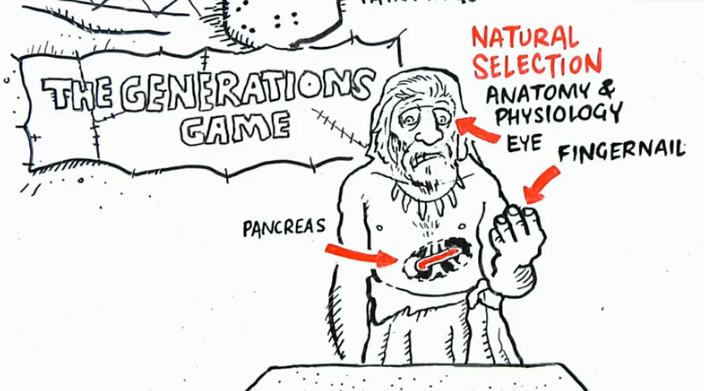(单词翻译:单击)
听力文本
How can we explain this universality?
我们如何解释这一普世性呢?
The best answer lies in trying to reconstruct a Darwinian evolutionary history of our artistic and aesthetic tastes.
最佳答案存在于对我们艺术和审美品味的达尔文主义进化过程的重新构建的尝试中。
We need to reverse-engineer our present artistic tastes and preferences
我们需要进行逆向组建我们当前的艺术品味和爱好,
and explain how they came to be engraved in our minds by the actions of both our prehistoric,
并解释它们是如何被铭刻在我们思想中的,通过我们在史前,
largely pleistocene environments, where we became fully human, but also by the social situations in which we evolved.
很可能是在我们完全进化成人类的“更新世”环境中,以及在我们在进化过程中所处的社会环境中的活动。
This reverse engineering can also enlist help from the human record preserved in prehistory.
这种逆向重建能从史前的人类记录中有所启发。
I mean fossils, cave paintings and so forth.
我指的是化石、洞穴绘画等等。
And it should take into account what we know of the aesthetic interests of isolated hunter-gatherer bands that survived into the 19th and the 20th centuries.
并且,应该考虑到生存到十九世纪和二十世纪的与世隔绝的狩猎族群的审美情趣。

Now, I personally have no doubt whatsoever that the experience of beauty,
我个人确信任何强烈而令人愉悦的“美”的体验,
with its emotional intensity and pleasure, belongs to our evolved human psychology.
都属于我们进化之后的人类心理的一部分。
The experience of beauty is one component in a whole series of Darwinian adaptations.
美的体验是整个达尔文主义适应过程中的一个成份。
Beauty is an adaptive effect, which we extend and intensify in the creation and enjoyment of works of art and entertainment.
美是一种适应性效果,我们在艺术娱乐的创作与享受中将其延伸并强化。
As many of you will know, evolution operates by two main primary mechanisms.
正如大家可能知道的,进化有两个主要的机制。
The first of these is natural selection -- that's random mutation and selective retention
第一个是自然选择--这是中是随机的基因突变和选择性保留,
along with our basic anatomy and physiology -- the evolution of the pancreas or the eye or the fingernails.
与我们基本解剖学和生理学结构一起--如胰腺、眼睛或指甲的进化。
Natural selection also explains many basic revulsions, such as the horrid smell of rotting meat,
自然选择也解释了许多本能性的恐惧和反感,比如腐肉的可怕的气味,
or fears, such as the fear of snakes or standing close to the edge of a cliff.
比如对蛇的惧怕,或站在悬崖边缘的恐惧。
Natural selection also explains pleasures -- sexual pleasure, our liking for sweet, fat and proteins,
自然选择也解释了愉悦--性愉悦,对糖、脂肪和蛋白质的喜爱,
which in turn explains a lot of popular foods, from ripe fruits through chocolate malts and barbecued ribs.
这反过来解释了许多广受欢迎的食物,从成熟的果实到巧克力糖和烤排骨。
演讲介绍
好的设计看起来棒极了,是的—但它为什么不能同时也是手感好极了,闻起来香极了,听起来舒服极了呢?设计师Jinsop Lee (TED Talent Search 获奖者)用一个简单好用的图形和几个例子分享他的五感设计理论。他希望:激发你去注意伟大的多感体验。


